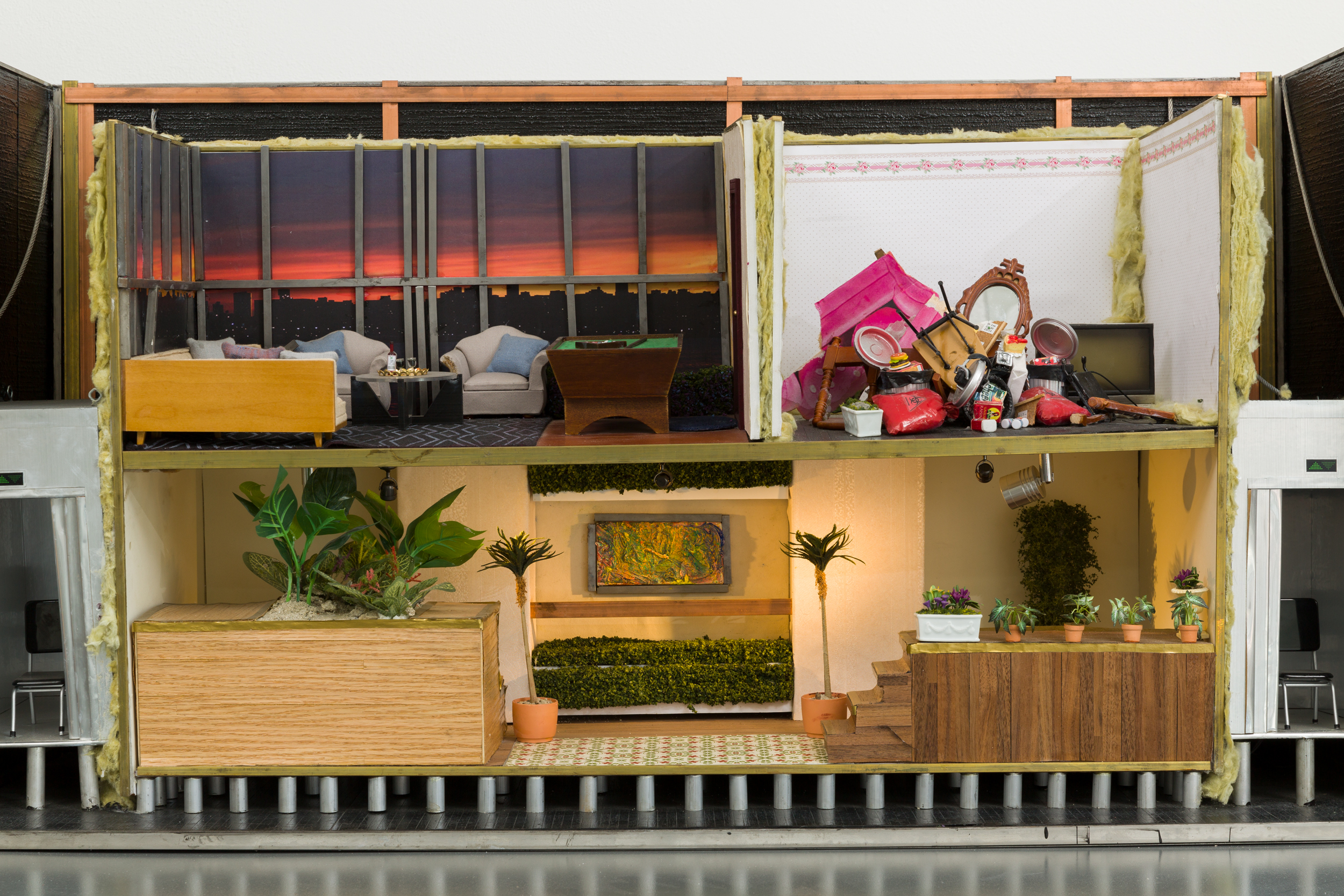Raw, Cooked, and Leftover
Opening: May 12, 7-10 pm
May 12-June 21
From The Cremation of Care – Nick Angelo’s Models, Scott Benzel
“What does it mean for a painter to think?” – Hubert Damish
The hedge is perfectly manicured, the expensive-looking wood planters a shade somewhere between bourgeois respectability and denuded avant-garde. The finishes, materials, and layout suggest refinement, a mashup of ozempaic Hollywood Regency and clear-cut mid-century Modern – this is the lobby of a luxury building. The penthouse, having slashed through all of that intervening “immaterial” matter (the floors separating the lobby from the penthouse significant only in their elevatory capacity), sits directly atop the lobby, floor-to-ceiling windows framing a fiery sunset cresting the megapolis. Next door – another aberration in the heartland of this real – a destroyed room, twisted furniture smashed into its center as if spontaneously sucked into one of the pocket black holes that scientists have recently warned permeate our universe.
Nick Angelo is best-known as a painter who occasionally makes models. Perhaps though, he is a model-maker who also paints – the early paintings are folkishly diagrammatic circulatory systems: luxury-or-modest-home-to-anonymous-pharmaceutical-company-to-burnt-out-room-todrug-treatment-to-luxury-or-modest-home, repeating endlessly...
In Angelo’s models, the Marxist geographers’ Spatial Fix – the investment of capital directly in land or a sector of real estate: be it penthouse, needle exchange, dingy apartment, or workout room – is pried from its conventional arrangement and set down, à la Dorothy’s house in The Wizard of Oz, in uncomfortable proximity to opposing sectors. By eliding the distance between social spaces and unceremoniously prying them open to view, Angelo reveals a dirty secret: it is all one system – the externalities of the luxury suite materialize in the addict’s den, the tastefully appointed non-profit is enmeshed with the woes it seeks to address – contradictions, once set in motion, are inextricably linked. In A Scanner Darkly, Philip K. Dick’s recovering addicts work the fields that produce Substance D, the addictive drug that landed them here in the first place. In sociologist Immanuel Wallerstein’s World-Systems Analysis, the interlock that simultaneously produces high-rises and “diseases of despair” is foundational while economists, city planners, architects, and neoliberal politicians work to deny its very existence.
Angelo’s models, however, are never purely illustrative and, even in their precise detail, never simply “imaging” a set of problems. Yves Alain Bois, following Hubert Damish, suggests that there is much in Mondrian that is “destructive”, a force actively aligned against mere mimesis, mere abstraction. Per Damish: One cannot give way to reverie in front of a Mondrian painting, nor even to pure contemplation. But it is here that there comes into play…some more secret activity of consciousness, an activity by definition without assignable end, contrary to the imaging activity which exhausts itself in the constitution of its object. Each time perception thinks it can go beyond what is given it to see toward what it would constitute as meaning, it is immediately led back to the first experience…
Amidst all the questioning, there is an element of glee in Nick Angelo’s models. We sense that he takes as much pleasure in destroying objects and spatial conventions as he does in constructing pristine simulations and there is as much (more?) care given to the necroscapes, the wasteoid spaces, as to the luxury spas. This leads to another uncomfortable realization: the boardrooms, the penthouse suites…?...hopelessly banal beside the smashed and frayed remnants of the social…


















